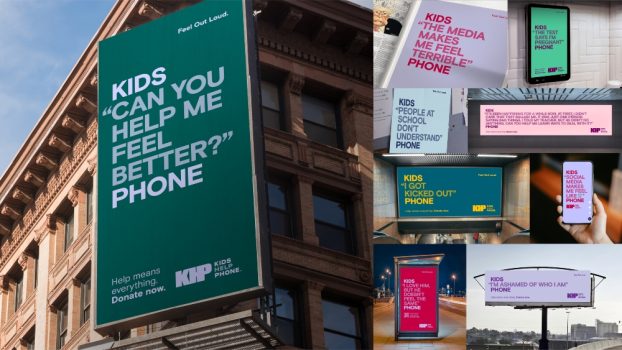Face scrubs, moisturizers and cleansing products have long been regarded as a female domain but that philosophy is rapidly changing. As today’s newsstands bulge with men’s lifestyle magazines, male grooming is becoming more sociably acceptable, leading marketers to develop new strategies for targeting the male demo with new product lines.
Port Washington, N.Y.-based researcher NPD Beauty Trends reports that the men’s prestige grooming business in U.S. department stores earned approximately $989 million in 2001 (a 3% decline from 2000 due to the economic downturn, fewer blockbuster launches and increased competition from the mass market, according to NPD.) Prior to 2001, the men’s grooming segment was registering moderate increases year on year for several years.
But savvy marketers realize that reaching out to men requires a very different game plan than targeting women. Many men still shy away from the whole ‘cosmetic counter’ experience, opting instead to make their beauty purchases online or in discreet airport retail outlets such as The Body Shop. And while some marketers target the male consumer through advertising, others stick to the approach of reaching men through the women in their lives.
The strategy of marketing men’s products to women has been tested and proven at Clinique Canada. The high-end brand finds that 80% of its men’s products are in fact purchased by women. ‘A lot of our programs are directed at female consumers. We hope that they will introduce the products to the men in their lives,’ says Kelly McGibbon, the brand’s Toronto-based global communications manager. For example, the recent in-store campaign ‘Want him to get closer?’ was based on this strategy.
Although men shy away from cosmetic counters in department stores, McGibbon notes, products are still packaged and displayed to be appealing to the male consumer, so as to attract a female shopper looking for a gift. Men prefer the fuss-free look, she says, so Clinique opts for simple packaging with grey plastic containers and easy-dispense tops.
This August, Clinique will be launching a new men’s product in Canada. Moisture Surge Extra Oil-Free Gel will be packaged in a flip-top container to appeal to the male demo. A marketing strategy around the new product has yet to be finalized, but McGibbon says in-store signage is likely to be a big part of it.
McGibbon notes that male shoppers tend to avoid department stores when shopping for skincare products, opting instead for mall kiosks, Clinique’s own airport retail outlets or online section, For Men Only. Younger professional men aged 19 to 34 are more likely to buy skincare products for themselves and are more comfortable asking questions.
According to Jeff Spriet, founder of Toronto-based guerrilla-branding agency, Wiretap, marketers should concentrate more on improving the perceived male acceptance of men’s beauty products and less on female acceptance. ‘Normally we use sexual attraction to women as a means of getting men to buy these products but more important is what another guy would think of you,’ he says. He recommends TV as a medium for raising the profile of the products and stamping out the stigma that still surrounds male grooming. Above and beyond that, Spriet believes that direct marketing is a good way to close the deal, together with targeted advertising in men’s magazines like Maxim.
James Whittall, president at Ottawa-based Menessentials.com, also dismisses the notion that men can only be reached by targeting women.
‘[Some large manufacturers] have spent hundreds of thousands of dollars developing a marketing distribution channel for women,’ says Whittall, who founded the online retailer of men’s prestige beauty products in October 2000. ‘So rather than making an investment into a new channel, they distribute into the existing channels and then wonder why men only account for 10% of their sales.
‘There is a huge untapped market out there, and we believe that men will shop for skin care products without the help of a woman if you offer them a means that suits them,’ he continues.
According to Whittall, the Internet is by far the best medium for reaching men. ‘That was the raison d’être for our entire business,’ he says. ‘No man wants to walk up to a counter and ask for a face scrub. The Internet provides a way for men to research and shop for these products in an anonymous way without embarrassment.’
The retailer’s primary target is the educated professional man in the 25-to-45 age group, a segment that Whittall notes is very familiar with shopping online.
Another key difference between marketing beauty products to men as opposed to women, in Whittall’s opinion, is that men don’t respond to a marketer’s attempt to play on their insecurities. ‘Women’s marketing is all about a new product to make them look younger or to give them the hairstyle that they ought to have. With men you have to be informative and take the ‘user’s manual’ approach.’
Unlike women who have been exposed to skincare treatments all their lives, men are often unfamiliar with the products and need step-by-step instructions on how to use them, Whittall says.
This is why Menessentials publishes regular articles on its site, offering grooming tips for men, a feature that regularly boosts sales of the recommended products, Whittall notes, indicating that men are very receptive to this kind of advice. No marketing has yet taken place offline due to the retailer’s modest marketing budget, although Menessentials is planning to start featuring radio spots on the Toronto-based male-targeted station, Mojo. ‘We did an interview on the station recently which brought a load of new visitors to the site, so we realized radio might not be such a bad way to reach guys,’ he says.
Even in the mass market, men’s skincare is an expanding market. Nivea introduced its Nivea for Men skincare range to Canada in February to fulfill growing demand.
‘Men are wanting to take care of themselves more than ever before,’ says Manon Bibeau, product manager of marketing at St. Laurent, Que.-based Beiersdorf Canada, the distributor of Nivea. ‘Men nowadays face the same pressure to look good that women have faced for decades.’
After a successful launch in the U.S. in 2001, it was decided to bring the products to the Canadian market. ‘Early sales have far exceeded our expectations before our marketing campaign [has even gotten] underway,’ says Bibeau, adding that some of the early interest is due to spillover from advertising in U.S. magazines.
Nivea’s traditional blue and white packaging and simple displays are also partly responsible for the early interest, Bibeau says, by effectively luring the target demo of 25- to 30-year-old males. And the competitive pricing has given the lineup an added advantage over its pricier competitors. ‘It’s the first face-care line in the mass market that’s really affordable,’ says Bibeau.
Despite its early success with no out-of-store marketing, Nivea Canada launched its own marketing program on May 6, starting with a TV spot created by FCB in the U.S, which is running on mainstream and specialty channels. This is to be supported by an extensive sampling program. Sachets of the men’s facewash, scrub and aftershave balm will be distributed in national and regional newspapers, together with step-by-step instructions on caring for your skin, and a coupon for money off your first purchase. Print ads will also run in selected magazines including Golf Canada.
The whole campaign aims to emphasize Nivea’s masculinity and simple-to-use, no-fuss qualities. And to boost further awareness, Nivea for Men has signed up as a sponsor of Tennis Canada’s master series.
Products within Revlon’s Almay line are also proving popular with the male sector. Although the clear shade of Pure Tints protective lip care line is targeted primarily at women, the product was designed to be unisex and has proved popular with men since launching in Canadian drug stores and mass market retailers in February.
Revlon’s spokeswoman, Lucy Frechette says the transparent plastic packaging with simple blue text and grey lid, gives the product a masculine feel. The launch was supported by print advertising in a range of women’s health, beauty and sports magazines.
However, some marketers, such as The Body Shop, shy away from mass-media advertising in favour of in-store merchandising and magazine editorials to pull in the male consumer.
‘The general public has the perception that The Body Shop is just for women so that’s a hurdle we have to surmount,’ says Tony Hamill, the retailer’s Toronto-based marketing manager. The Body Shop’s long-running policy of avoiding traditional advertising means that marketing takes place primarily in-store with the intent of luring men as they shop for gifts for the women in their lives.
‘It’s all about packaging and signage,’ says Hamill. ‘With men it is important to show them that this product is appropriate for them. It’s not enough to say ‘men can use this too.’ We have to make it known that this product has been specially engineered for men because men’s skin is different to women’s.’
The Body Shop’s PR agency, Strategic Objectives, of Toronto, also targets mainstream magazines with details of new product ranges, with the hope of attracting editorial coverage. In addition to men’s magazines, Chatelaine and Flare are popular choices, as the brand hopes to entice female consumers shopping for loved ones.
Sales of men’s products including the Mechanics for Men and Hemp lines have seen a steady year-on-year increase since their conception, says Hamill, and he predicts this increase will continue. A new product for men is currently in the making for an anticipated launch in 2003 although Hamill declines to give details. Dollars from scents
Fragrance companies have finally caught on to the idea that the best way to reach men is through the things that make them tick: sports and cars. Fragrances such as Jaguar and Ferrari cologne talk directly to the male demo, while Mont Blanc, Adidas and Swiss Army have also recently launched male fragrance ranges.
The Adidas Moves line of aftershaves and deodorants is targeting sports enthusiasts and is therefore found not in high-end department stores but alongside other Adidas items in stores such as Foot Locker and Sports Authority. Mont Blanc, meanwhile, merchandises its product alongside its pens at its Madison Avenue store in New York.
‘When brands which have effectively become cultural icons in their own right extend into parallel categories like fragrances, the likelihood is high that it will be a success,’ says Thomas Pigeon, CEO at Oakville, Ont.-based Pigeon Branding + Design.
However, he advises marketers thinking of transferring equity into another product to maintain consistent quality standards.
‘The thing for marketers to be wary of is the way in which a product introduction can halo back onto the brand,’ he warns. While a poor quality fragrance would have little effect on an aspirational brand such as Ferrari, more accessible brands such as Mont Blanc and Swiss Army could suffer a negative impact from introducing a poor-quality fragrance, Pigeon says.
Philippe Garneau, partner and executive CD at Toronto-based Garneau Würstlin Philp Brand Engineering, adds that in order to be successful, the product should always be true to the brand. ‘I’m not suggesting that a Ferrari fragrance should smell like a car but it should capture the essence of the brand,’ he says. ‘It ought to be racy and come in a modern, sporty bottle.
‘If a marketer is simply trying to cash in on the brand’s fame then it is doomed to fail,’ he adds.























